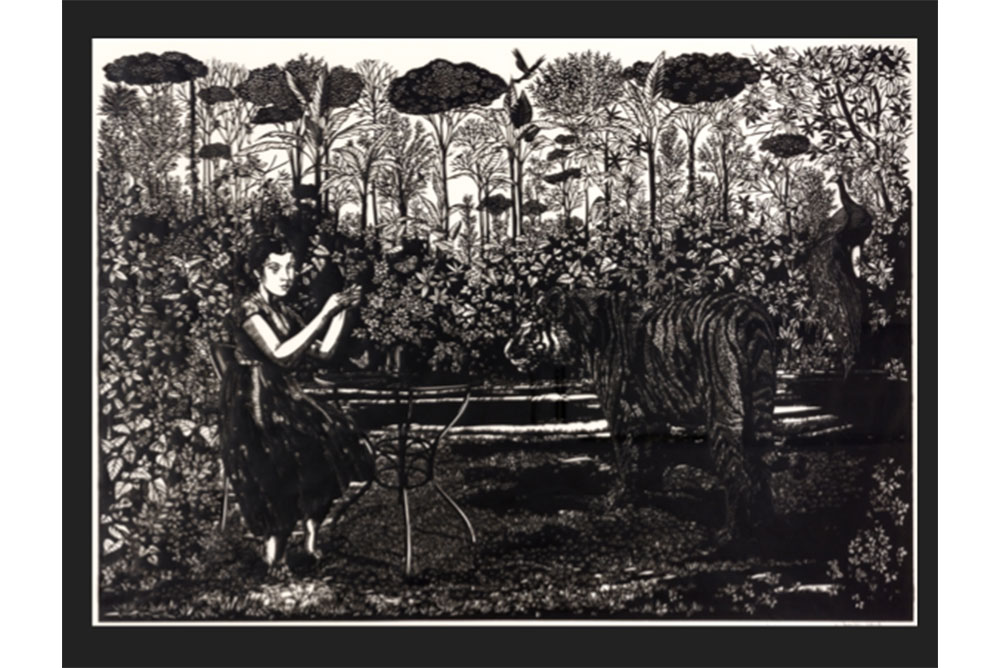
Made entirely from one sheet of paper, snipped away at by paper artist Lucrezia Bieler. She calls her works “papercuttings”; we call them amazing.
By Nancy McKeon
WOOD. CLAY. SILVER. Three substances and hundreds of treasures at the Smithsonian Craft Show in Washington DC next week.
Show-goers will find wood in many forms, from polished furniture to hand-bent and -steamed basketry to pulp-based paper. Clay can mean humble terracotta pots, but at the craft show it’s more likely raised by artisans to heights of fired earthenware and sparkling porcelain vessels. Silver gets hammered and stretched and shaped into jewelry, as well as into elevated everyday household objects.
Of course the show encompasses other materials as well: glass, fabric, decorative fiber, precious and semi-precious gems, leather, and mixed media. But here are four craftspeople lifting their basic materials in inspiring ways.
Paper
Swiss-born Lucrezia Bieler starts with a sheet of black paper and surgical scissors. What she winds up with is work that hangs in museums. For several years she has been working on two themes: women interacting with nature (the example shown above) and endangered species. “For the women-nature compositions,” she states, “I use a style that reminds me of mediaeval millefleur tapestry or Impressionist paintings.”
Bieler’s cutttings are part of the Swiss and German tradition of Scherenschnitte, or “scissor cuts,” begun in the 16th century, emigrating to the United States with Swiss and German immigrants, largely to Pennsylvania. Bieler mounts her finished pieces onto white paper, but glues them only in certain places to allow shadow and depth.
Simple pieces, she explains, can be done in a day, but complex ones, such as shown above, can take an entire year, and are priced accordingly.
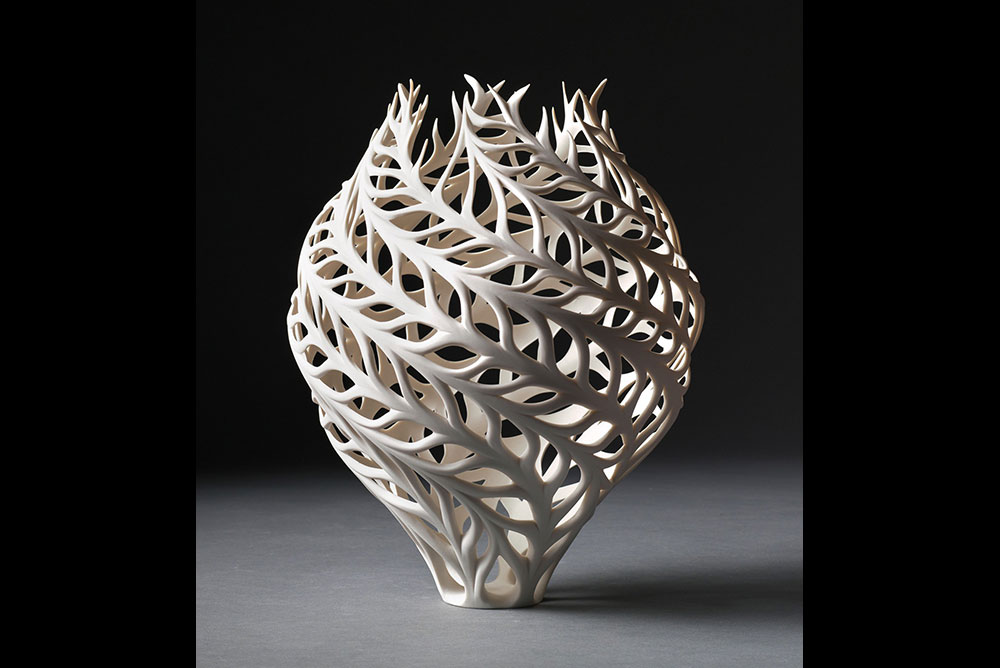
Artisan Jennifer McCurdy specializes in wheel-thrown porcelain, which she then carves for movement and shadow.
Porcelain
Jennifer McCurdy of Martha’s Vineyard works with a translucent body for her pieces, starting by throwing porcelain on the potter’s wheel, then carving for light and shadow and only then firing the vessels. For some pieces, her husband, Tom McCurdy, enters the picture and gilds the interiors with 24-karat gold leaf. The resulting pieces manage to look as though they’ve been caught in motion.
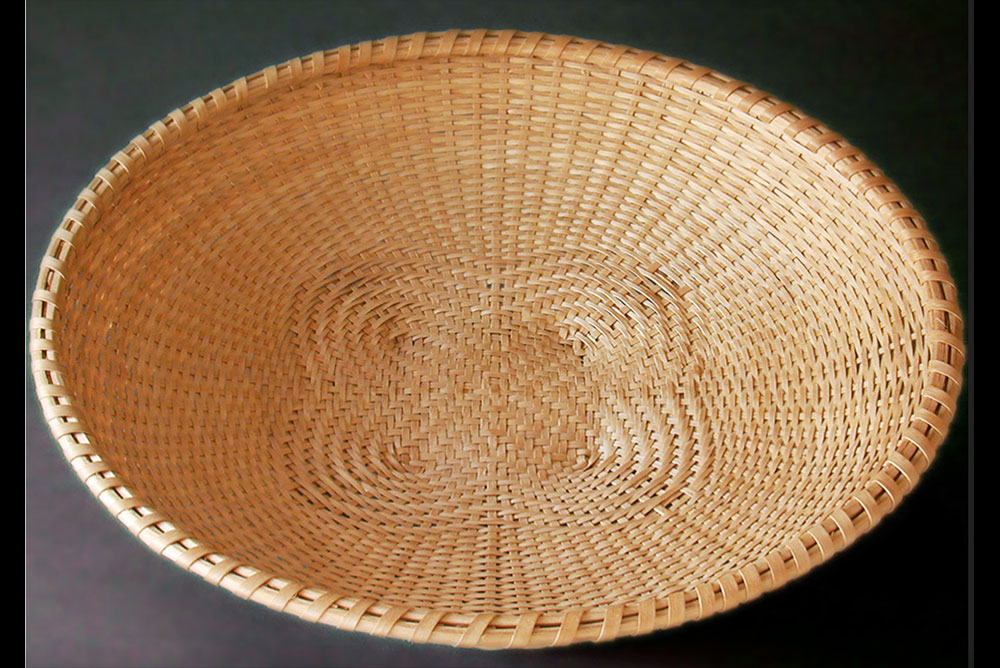
A basket made by hand from Maine ash trees by Stephen and Tamberlaine Zeh.
Wood Basketry
Baskets are varied. In the Smithsonian show, Connecticut basketmaker Kari Lønning, who studied Norwegian crafts at the University of Oslo, works with the invasive akebia vine and artist-dyed rattan reed to produce often colorful baskets. Stephen and Tamberlaine Zeh, on the other hand, make their baskets from Maine brown ash trees. It sounds as if they torture the wood, citing hand-splitting, pounding, hand-scraping, carving, and green-bending, but those are the methods of the Maine woodsmen, Shakers, and Native American basketmakers. Inspired by their basketry, Tamberlaine Zeh takes the couple’s basketmaking techniques and applies them to weaving gold and platinum jewelry.
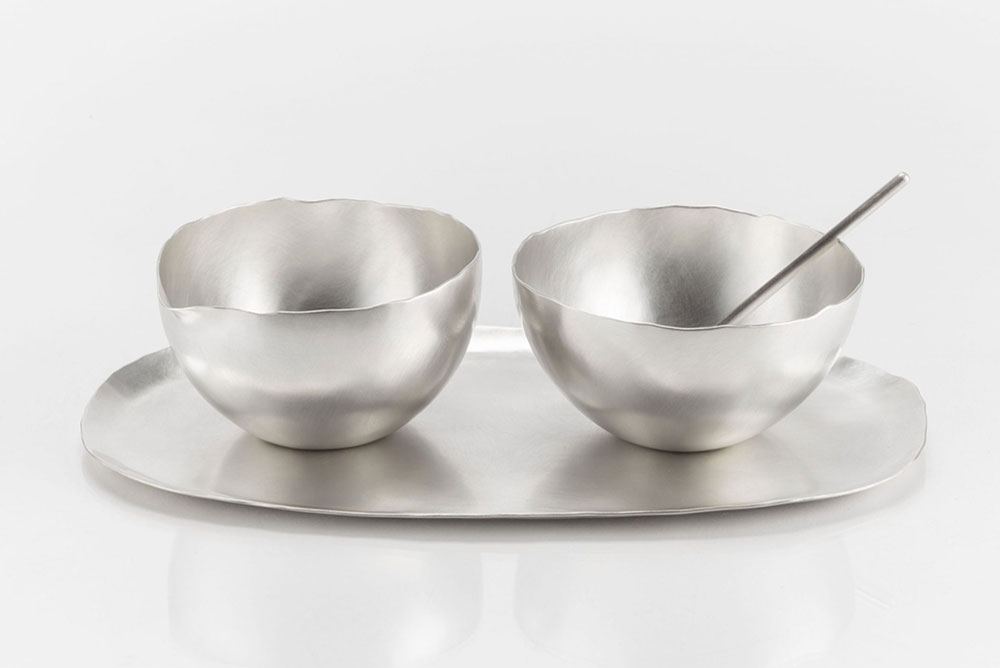
Sara Thompson brings a minimalist sensibility to traditional silversmithing.
Silver
Sara Thompson apprenticed herself to a bench jeweler while she was still in high school in Massachusetts. She then pursued metalsmithing at the Oregon College of Art and Craft. She thrives on “raising” a flat sheet of sterling silver into a three-dimensional vessel or spoon. A 12-minute video on her website documents the six-hour process of making such a work. The pieces she will bring to the Smithsonian fair show what she calls a convergence of traditional silversmithing with contemporary and minimal design—practical objects with a touch of artistry and, always, the visible hand of the artisan.
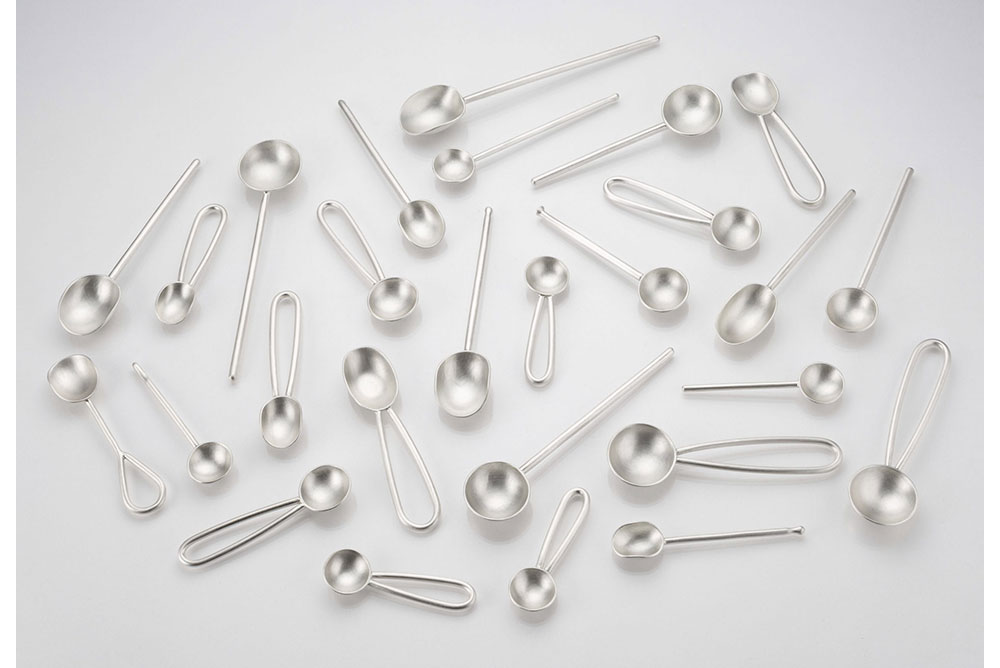
Small, simple spoons by silversmith Sara Thompson.
The Smithsonian Craft Show opens to the public on Thursday, April 21, 2022. Want to be among the first? Tickets for the Preview Night Party—from 6 to 9pm on Wednesday, April 20—are $250. First Look and Visionary Reception—from 5 to 6pm—are $500.
Show hours: 10:30am to 5:30pm, Thursday, April 21, to Saturday, April 23; and Sunday, April 24, 11am to 5pm. You may use your ticket on the day of your choice.
Admission: $20 at the door or in advance online at Smithsonian Craft Show.
Group tickets (10 or more) are $10 each; student tickets are $10.
Covid Protocol:
To attend, proof of full vaccination against Covid-19 is required, either by displaying your status on a smartphone or by showing a physical copy of the vaccination card or official vaccination record.
Unvaccinated guests must provide proof of a negative Covid-19 test taken within 72 hours of attending.
Masks must be worn indoors, regardless of vaccination status, unless actively eating or drinking.
The Smithsonian Craft Show is produced by the Smithsonian Women’s Committee, an all-volunteer organization that supports the education, outreach and research programs of the Smithsonian Institution. The awe-inspiring National Building Museum is located at 401 F Street NW (202-272-2448). The closest Metro stop is Judiciary Square.

Beautiful items. Such talent.